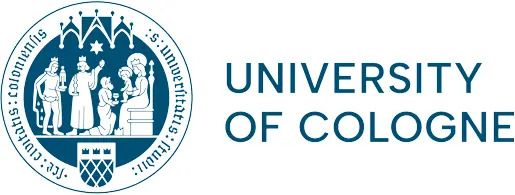It all started with Lothar. The hurricane swept across the country around Christmas 1999 with winds of over two hundred kilometres per hour in places. In the end, the result was devastating. Lothar caused the worst storm damage in recent European history and claimed the lives of over a hundred people. Nobody had predicted that the storm would be so drastic. The German Weather Service announced afterwards that a more effective warning system was needed, but that the models used to forecast Lothar’s development had simply not captured it correctly. It was clear that improvements were needed.
‘This was a major turning point for data assimilation in forecasting models,’ says Professor Dr Nikki Vercauteren from the Cologne Institute of Geophysics and Meteorology.
Data assimilation, Vercauteren’s speciality, is something like the IT division in meteorology. The aim is to develop intelligent methods of observation and utilise them optimally in order to improve weather and climate models. Better or more data wouldn’t do any harm, but what is needed above all are models that interpret this data or analyse it according to its importance. ‘We want to put together the missing pieces of the Earth system observation puzzle and research how observations and modelling can be optimally combined,’ says the meteorologist.
The weather is fundamentally a chaotic system with many random processes. Storms in particular often develop and change at short notice. A slight change in the initial weather situation can have a major impact and result in a completely different course. Therefore, as Lothar has shown, spontaneous changes in the atmosphere must be better taken into account. The Cologne Meteorological Centre is therefore working closely with theoretical computer science to find patterns in the data. ‘This also has a lot to do with machine learning. The computer scientists analyse which algorithm works optimally and demonstrably leads to correct results,’ says Vercauteren. ‘This allows uncertainties to be quantified and results in higher guarantees in the prediction models.’
In Cologne, this is precisely what is being worked on in collaboration with other universities such as the University of Bonn and within research partnerships such as CESOC.
CESOC – Since autumn 2020, the Universities of Cologne and Bonn and Forschungszentrum Jülich have been operating a joint centre for Earth system observation and computational analysis, the Center for Earth System Observation and Computational Analysis (CESOC). The aim is to observe the Earth system globally, understand it comprehensively and predict changes.
There are now many research projects that utilise artificial intelligence or machine learning. ‘But we want to improve the fundamentals, i.e. machine learning and the algorithms themselves,’ says Cologne meteorologist Professor Dr Susanne Crewell. An example from the collaboration with computer scientists in Bonn shows that there is great potential here. ‘They have already improved certain methods by a factor of 100,000 in terms of computing time, using clever algorithms alone.’
In future, the Earth system as a whole is to be visualised and recorded even better. A digital twin of the planet will be helpful here. This will make it possible to observe and simulate processes not only in a single area, such as the atmosphere or the ocean, but in the entire global interaction. The ‘Destination Earth’ project of the European Centre for Medium-Range Weather Forecasts (ECMWF) in Bonn, with which the CECSOC meteorologists are collaborating, is working on the development of such a twin. ‘This is a very big project,’ says Crewell. ‘The digital twin will be very innovative in terms of detail, quick access to information and interactivity. Here too, data assimilation will play a key role in making the grids and scales tighter and smarter to analyse.’
Nikki Vercauteren is certain that, despite the progress made, there will still be a certain limit that the weather forecast will not exceed. From day ten onwards, for example, it still resembles a coin toss, with an accuracy of around fifty to sixty per cent. However, history also tells us that the precision and accuracy of forecasts has already improved significantly in recent years and decades. ‘Especially up to day three, the forecasts are now so good that they are eighty or ninety per cent accurate. That was unimaginable fifty years ago,’ says Vercauteren. It is quite conceivable that research into smart forecasting models will lead to further progress and help to prevent disasters caused by extreme weather events such as Hurricane Lothar.

